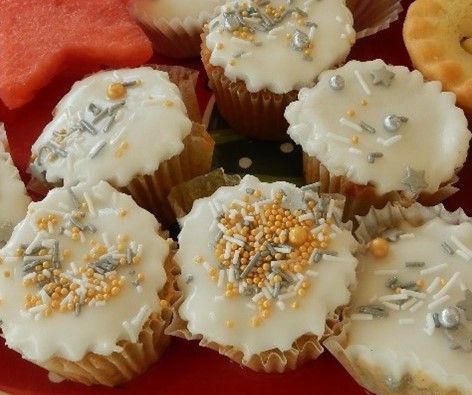
Help yourself to a slice of Happiness Pie
Have you noticed? Magazines on the newsstands are laden with scrumptious food fare and the fruit mince pies are almost walking down the supermarket aisles! Just the sight of them sends my tastebuds into overdrive, bringing to mind the tangy sweet and sour mix of apples, currants, mixed peel and orange mouthful. For me, fruit mince pies are like Hot Cross buns – once-a-year foods. Along with my Christmas cupcakes (pictured) that use fruit mince as a ‘secret’ ingredient. (If you’d like the recipe email me!)
Such evidence of the holiday season fast approaching also alerts me to the need to double-down on my personal wellbeing preservation plan, ensuring the right support for my ‘happiness pie’ at a time that can be fraught with stress and tension, not Hallmark sweetness…
What makes for happiness
Back in the early 2000s, University of California Riverside psychology professor Sonja Lyubomirsky used a pie chart to illustrate a theory explaining the underlying basis of happiness.
Lyubomirsky says 3 factors determine an individual’s happiness. Since we’re talking pies, let’s call them ingredients.
The first key ingredient is genetics—and we all have a ‘set’ point, a certain predetermined level of happiness or unhappiness.
This genetic component is not the only ingredient though.
There’s what she called life circumstances: gender, education, race, geographic location, income, health for example. Some of these are beyond our control, but not all.
Then there’s intentional activity—what we think and do..
In the original pie, the proportions were 50/10/40. Two decades on, positive psychology researchers (including Lyubomirsky) retain the 3 ingredients but are not as prescriptive about the proportions. Rather like some of the best chefs who can pop a sprinkle of this and a splash of that…
For me, this means:
- doing activities that feel natural, enjoyable and align with my values
- doing activities that are meaningful and purposeful
- weaving little actions throughout the day, every day
- changing practices up for variety, to keep my brain alive to possibilities.
By engaging in healthy mental and physical habits, we exert a lot of control over our own happiness and savour our slice of happiness pie.
Bon appetite!
If your ‘intentional activities’ include laughing more, find a social laughter club near you or join an online laughter club. Here are details of Queensland laughter clubs.
If you’d like to understand more about the positive practice of Laughter Yoga, check out my training page for workshop options in 2026 or let’s have a chat about hosting a workshop in your community.
